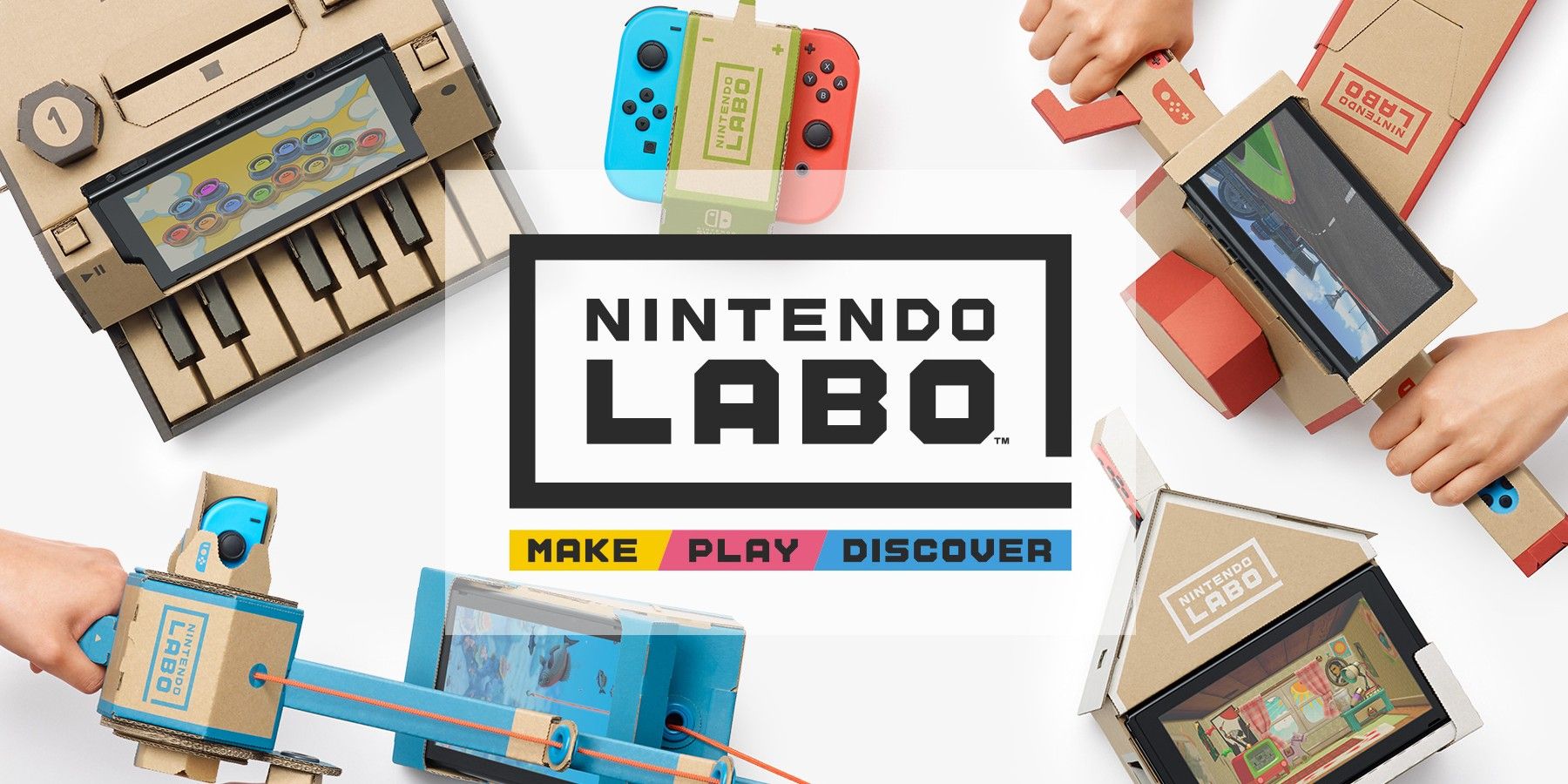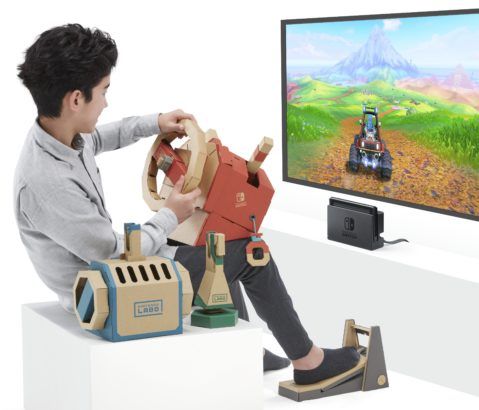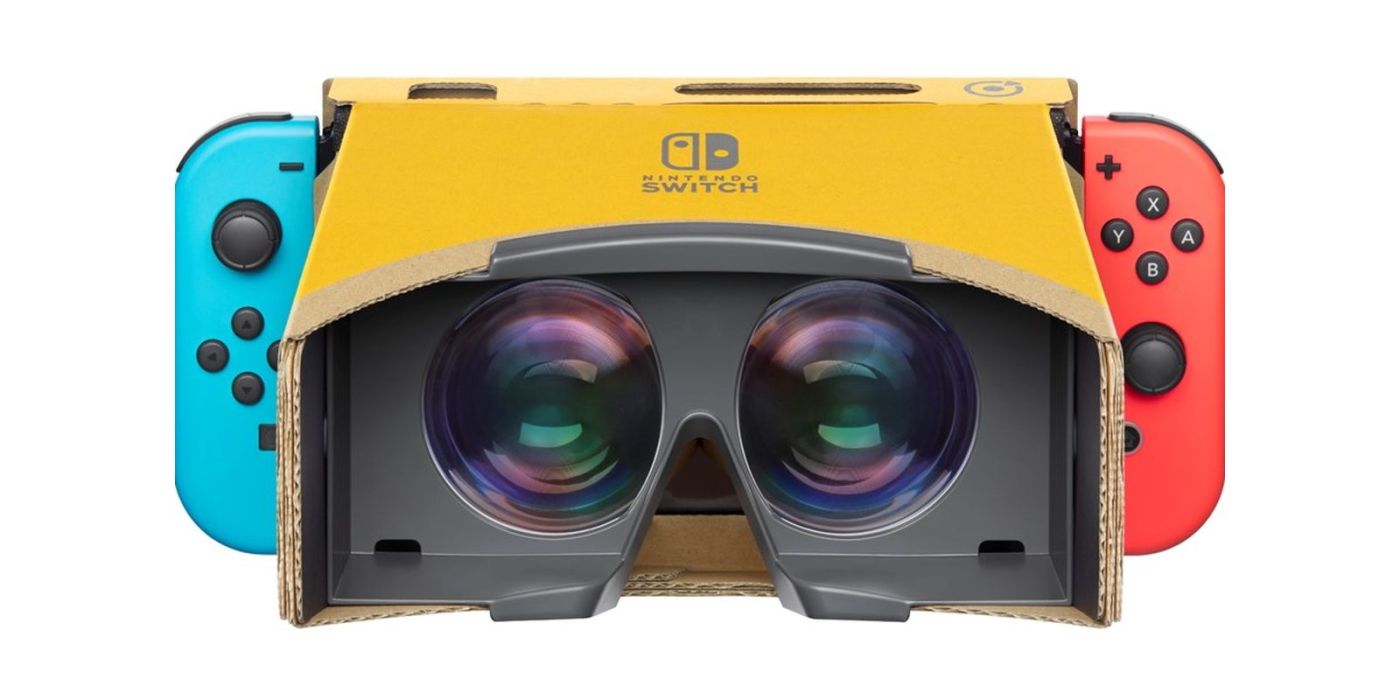Almost 50 years ago, Nintendo stepped in to the video game ring. It's only natural, then, that after all this time in the industry, Nintendo has made a few stumbles along the way. For every NES, SNES, and Game Boy, there comes a Virtual Boy. For every Game Cube and Wii, a Wii U is created. And for every Nintendo DS and Switch, a Nintendo Labo rears its head.
What started as an incredibly creative and unique idea, quickly turned in to one of Nintendo's most underutilised products. While it isn't as much of a financial failure as earlier Nintendo gambles, there's no denying that Labo didn't reach the height of popularity that Nintendo had hoped for, and there's some key reasons behind this.
Remembering The Few Released Nintendo Labo Kits
Nintendo Labo was originally conceived of during an internal company-wide survey in which Nintendo employees were asked about what they thought the newly released Joy-Cons could be capable of, and how they could be used to their maximum potential. One of the ideas given centered around building peripherals out of cardboard that the Joy-Con could then be pushed into.
After some brief prototyping tests where the development team discovered how much fun it was to experiment with the cardboard itself, the idea was fully realized and began its initial development stages. The philosophy behind Nintendo Labo remained the same from day one; the goal was to be innovative and to push the boundaries of video games as the general public knows them.
But Nintendo Labo had one clear goal in mind, even from its very first stages: to appeal to a younger audience, and make the Switch more accessible to children. This philosophy and goal took the use of cardboard from the initial prototyping stage and carried it over to the final product, as the development team decided that it would be the best way to allow the players to customize, experiment, and repair their creations.
While initially extremely straightforward to make, these kits underwent a complete remodel, as it was decided that no glue or cutting would be required to make the kits. With help from external testers, the cardboard kits were refined repeatedly until the final kit was ready for production.
Nintendo would name these carboard kits "Toy-Cons," and would announce the first two kits in July 2018 under the Nintendo Labo brand name. The first two kits to be revealed were the "Variety Kit" and the "Robot Kit," which would give players cardboard Toy-Cons, as well as a game to use them with.
The Variety Kit gave players five separate Toy-Con models, the first of which was two remote-controlled cars, which used the Joy-Con's HD Rumble technology to move the cardboard vehicle, and used the IR camera to follow pre-determined routes. A fishing rod kit was included, with the Joy-Con acting as the handle. The fishing mini-game included with the collection uses the Joy-Con's motion controls to move the rod on-screen.
One of the kit's most unique models was the cardboard piano, which was fully functional and offered an entire octave range. The Labo kit managed this by using the Joy-Con's IR sensor to detect the movement of the keys. A sizable cardboard house was also included in the kit, which could be interacted with in the game by using other cardboard components. Perhaps the most useful and engaging Toy-Con in this kit was the motorbike handlebars, which used both Joy-Cons to steer the motorbike on-screen. This Toy-Con can also be used with Mario Kart 8 Deluxe, which patched in the Labo functionality soon after its release.
The Robot Kit had just one Toy-Con model, but its size more than made up for the quantity. The Robot Kit gave players an entire cardboard exoskeleton, with a backpack being used to hold the Joy-Con so that it could sense arm and leg movements, and a visor being used to hold the other Joy-Con, which also used motion-sensing technology.
Shortly after the release of the two debut kits, Nintendo also released the "Vehicle Kit," which gave players three separate steering consoles, one for a car, submarine, and a plane. These consoles could be swapped between in-game with a Toy-Con in the shape of a key.
In April 2019, Nintendo announced its first Labo kit in a year. The "VR Kit" gave players a set of carboard goggles, which the console would be placed into. Cardboard attachments would then be fitted onto the end of the goggles. The kit included a pinwheel, camera, elephant, bird, and blaster attachment.
Why Nintendo Labo Didn't Take Off
On the surface, Nintendo Labo seems like a pretty great deal; a bunch of construction toy sets all bundled together, with a video game packaged in that uses those toys in creatively interactive ways. However, that's not how many viewed it.
Upon its first announcement, Nintendo Labo was met with quite a bit of confusion. While the experimental new product was met with some intrigue from fans, expressing their excitement in using the product with younger relatives, to many the cardboard-based product felt like a gimmick, and an expensive gimmick at that.
The retail prices for the Variety Kit and Robot Kit were $69.99 and $59.99 respectively. Some players were more than happy with this price, justifying it by breaking the cost down to a $50 game and $10-20 on cardboard. However, a lot of Nintendo fans couldn't really get to grips with the price tag, instead viewing it as paying a sizeable sum for just some bits of cardboard. And while Nintendo made it clear that the Toy-Cons could be repaired easily, and replacement stencils were available for free online, this didn't do much to convince the more skeptical Nintendo fans.
On top of this, reviews of the first two Labo kits, while not terrible, weren't amazing. Many outlets cited the lack of replayability and the incredible simplicity of the games included as reasons to not pick up a kit. This criticism only continued with the release of the VR Kit, which was both cumbersome to use and lacked any true gameplay depth. Aside from a few updates to existing games, giving them a brief VR experience, no full VR titles released for the Labo following its release.
Nintendo Labo's lack of current support is the core reason behind its disappearance. Despite relatively decent sales, especially for a product that isn't a AAA Nintendo game, the return on investment must not be there for Nintendo. And while players can still pick up all of the released Labo kits, it seems fairly unlikely that Nintendo will release any more in the future.



